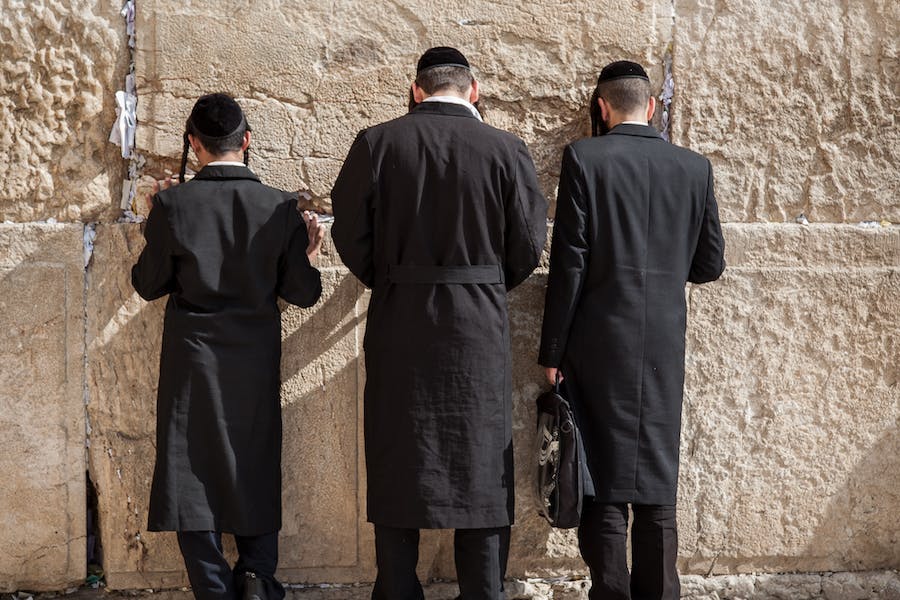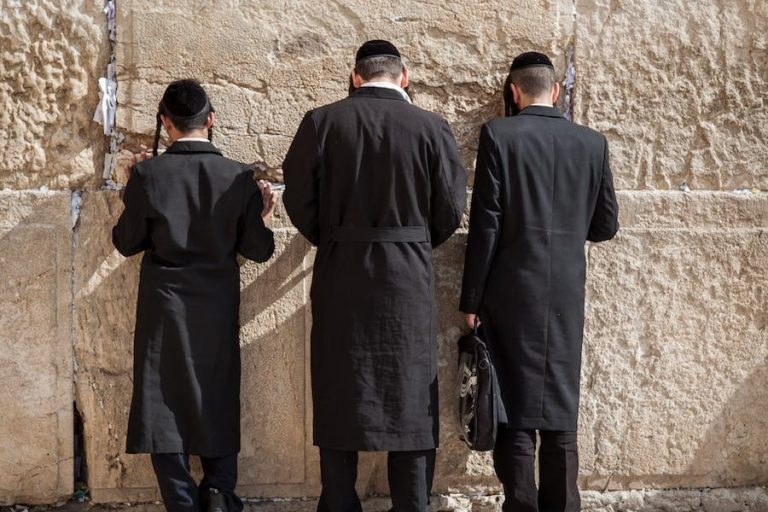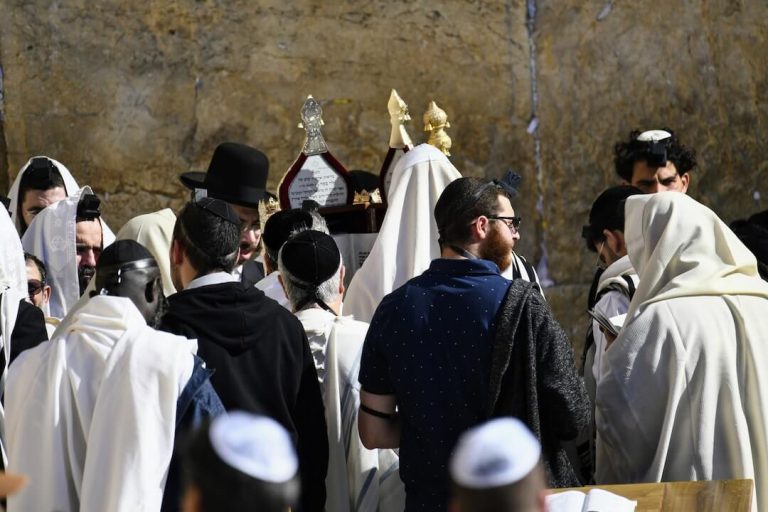An In-Depth Look at Sukkot, The Festival of Booths
As the Jewish calendar spirals from the profound introspection of Yom Kippur to the exuberant observances of Sukkot, we find ourselves immersed in an ancient festival that graces us annually with its unique blend of historical remembrance and natural appreciation.
Succinctly referred to as Z’man Simchateinu — the Season of our Rejoicing — Sukkot represents a pivotal closure to the sequence of Jewish High Holy Days.
What is Sukkot and how is it celebrated?
Sukkot, also known as the Festival of Booths, is an exuberant Jewish holiday celebrated in autumn, commemorating the Israelites’ 40-year journey through the desert after their exodus from Egypt. This seven-day festival begins on the 15th of Tishri, following the solemn observance of Yom Kippur. At the heart of the festival is the practice of dwelling in temporary structures called Sukkahs, symbolizing the transitory shelters used during that historic wander.
These are constructed with organic materials, their roofs open to the sky, fostering reflection on the themes of vulnerability and reliance on divine protection. Families decorate them, share meals, and sometimes sleep within to embody the festival’s spirit. Sukkot also features the commandment to rejoice with the Four Species—a citron (etrog), palm branch (lulav), willow twigs (aravot), and myrtle branches (hadassim)—waved in all directions as a gesture of faith and unity.
Biblical Roots and the Wandering in the Desert
The Festival of Sukkot debuts on Tishri 15, five days post-Yom Kippur, and lasts for seven days. Its historical roots trace back to the period when the children of Israel wandered the desert, dwelling in temporary shelters for forty years before reaching the promised land.
This transient state is vividly captured in the holiday’s practices and symbols, encouraging contemporary worshippers to not only remember but also re-enact these defining moments of Jewish perseverance.
Agricultural Celebrations: The Festival of Ingathering
Concurrently, Sukkot honors the agricultural cycle with its second title, Chag Ha-Asif, the Festival of Ingathering. Recognized as the last of the Shalosh R’galim — the three pilgrimage festivals alongside Passover and Shavu’ot — it signifies the completion of the harvest, a pivotal juncture for an agrarian society. The juxtaposition of historical and agricultural motifs reveals the multi-faceted tapestry of Jewish festivals, always weaving together the threads of spiritual heritage with the natural world.
Constructing a Sukkah: Embracing Impermanence
Sukkot derives its name from the Hebrew word for the fragile dwellings, or booths, called sukkot (singular: sukkah). To fulfill the command from Leviticus, these temporary structures invite families to engage in the delightful task of building their own sukkah. The process is a tactile bridge to a historical journey, evoking childhood nostalgia through the construction of these ephemeral homes. Intent on fulfilling the mitzvah of “dwelling,” many partake of their meals under its canopy, some even choosing to sleep within its rustic embrace.
The sukkah displays a peculiar architectural integrity, with at least two and a half walls, and a roof adorned with sekhakh — natural materials severed from the ground such as bamboo, branches, or even cornstalks. This coverage is deliberately sparse, allowing the rain to enter and the celestial bodies to be glimpsed, ever reminding us of our connection to, and reliance upon, the elements. The specifics of the sukkah crystallize an ethos of humility and a profound sense of transience — central themes to the festival.
Arba Minim: The Four Species and Their Significance
A poignant Sukkot ritual involves the Four Species — the etrog (citron), lulav (palm branch), aravot (willow branches), and hadassim (myrtle branches) — each bearing profound symbolic interpretations. The etrog, with its pleasant taste and aroma, exemplifies knowledge and piety, while the other species each represent distinct qualities of the Jewish people. Bundled together, these species are a powerful emblem of unity and communal harmony. Through the act of waving these in all directions, worshippers acknowledge the omnipresence of the divine.
During the Hallel prayer and the surrounding bimah processions called hakafot, these species are showcased. These processions draw their inspiration from ancient temple rituals, further deepening the connection between contemporary practice and historical enactment.
Embracing Tradition and Contemporary Reflection
As we prepare for Sukkot 5784, beginning at sunset on September 29, 2023, we are encouraged to embrace the ritual with a sense of both reverence and creativity. The sukkah, with its colorful decorations, is an expressive canvas reflecting our communities and families, a joyous place for gathering and celebration.
Moreover, as we gather in our sukkot and wave our arba minim, we become physically engaged in an act of remembrance that transcends time — a joining of hands across history, reaffirming the enduring values of faith, gratitude, and unity. This festival’s timeless practices allow us to express our thanks for the bounties of the harvest, acknowledge the narratives that have shaped us, and fortify our communal bonds.
Sukkot reminds us, too, of the resonances it shares with other cultural festivals, such as the American Thanksgiving. While its origins and significances are unique, the parallels drawn between these celebrations highlight the universality of gratitude and rejoice across diverse traditions.
Culinary Delights of Sukkot
What foods grace the Sukkot table naturally reflect the harvest’s yield, placing an emphasis on seasonal fruits, vegetables, and grains. Stuffed dishes, symbolizing abundance, often have a place of honor. The physical act of communing and dining in the sukk
ah, under the expanse of the stars, nurtures not only the body but the soul—creating a multi-sensory experience that lingers long after the week is over.
Dishes such as stuffed peppers, couscous with dried fruits and nuts, and squash filled with a medley of grains capture the essence of the harvest, while simultaneously providing a hearty sustenance for participants. Another traditional favorite, kreplach, which are dumplings typically filled with meat or potatoes, symbolize the harvest’s wrapping up.
Sweet treats featuring honey, apples, and pomegranates serve as reminders of the wish for a sweet year ahead and the land’s abundant produce. These flavors don’t simply tantalize the palate; they evoke a sense of place and tradition, linking celebrators with the land’s bounty and with generations past.
Integrating Sukkot into the Modern World
In the modern world, the principles of Sukkot can also extend beyond the Jewish community, serving as a beacon for sustainability and ecological consciousness. Advocate for green living, Sukkot’s temporary shelter represents minimalism and resourcefulness—an eco-friendly model promoting the idea that less can indeed be more.
Moreover, Sukkot can inspire a greater appreciation for the earth’s fragility, encouraging us to consider our environmental impact. The very materials used in the construction of the sukkah are reminders of the earth’s resources which, if not carefully managed, are as vulnerable as the sukkah itself.
Lastly, Sukkot’s themes of hospitality and openness prompt us to consider the wider community, inviting friends and strangers alike into our sukkot to share in the celebration, thus reinforcing the virtues of community and inclusivity.
Optimizing Sukkot for a Digital Audience
In a world where so much communication and community building occurs online, Sukkot carries messages that can resonate strongly through digital platforms. By sharing images of sukkahs, meals, and festivities on social media, communities can transcend geographical boundaries, celebrate with far-flung relatives and friends, and extend invitations to those who may have never experienced the joy of this festival.
Crafting engaging online content that explores the depths of Sukkot’s teachings can further extend the festival’s reach, offering insight and inspiration to a global audience. From blog posts detailing the rich traditions and gastronomy, to infographics outlining the significance of the Four Species, the digital space is rife with opportunities to showcase Sukkot’s multifaceted splendor.
Conclusion
In summation, Sukkot stands as a vibrant festival that marries historical significance with agricultural appreciation, inviting us to dwell in sukkot as a homage to ancestral trials and the blessings of the harvest. Throughout this piece, we’ve explored the multifaceted dimensions of Sukkot, from its Biblical origins to contemporary applications, highlighting its relevance and joyous spirit.
It’s clear that Sukkot is more than a mere holiday; it’s a period of profound reflection and communal harmony. As we usher in Sukkot 5784, let us weave these traditions into our modern lives, embracing sustainability, hospitality, and the universal language of gratitude. May your Sukkot be filled with meaningful celebrations and a conscious connection to the world around us, as we share in the Season of our Rejoicing.







